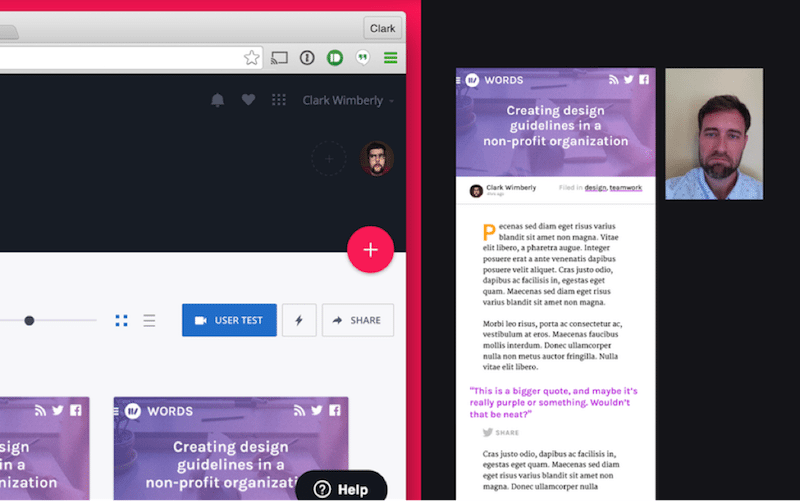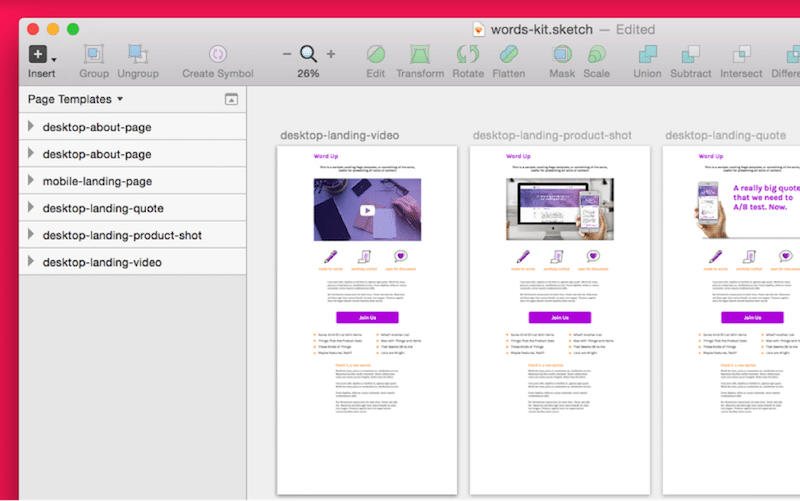Post launch
Episode #10 of the course Design workflow with Sketch by InVision
I used to think that a successful launch meant it was time for celebration and relaxation. Over the years I’ve learned that post launch is a crucial time—a period filled with surprises and quick fixes.
Often the launch process and following aftermath is engineer-heavy, but a good designer can do a lot to lift pressure and add value.
Measure, measure, measure!
There’s a bunch of ways to track a design’s performance, but these are some of my favorites:
User testing with real, live folks
With all the planning and design thought in the world, you can’t replace testing on real, live people. They’re going to surprise you every single time.
Some of my favorite user testing is old school, like simply standing over someone’s shoulder while they use my app. It’s fun, enlightening, and only a little bit weird. For times when IRL isn’t available, user testing hops into the cloud.
Once again, InVision’s got your back. With user testing powered by Lookback, you can actually watch users interact with your prototype. You’ll get a full recording of the screen during the session, along with video and audio once the user consents to the recording.

To get things going, you’ll need a Lookback account and SDK token. Once you’ve got that ready, hit the User Testing button to share your mobile project.
Using the user testing feature requires the InVision Viewer for iPhone 6 or 6+.
Use analytic events to track the user flow
This one might require some help from a developer, but most analytics tracking allows you to set up custom goals and events, which is perfect for figuring out which part of your design is confusing your users.
It works like this: an event is a tiny signal tracked by your analytics when a certain step has been taken by a user. If there’s a few steps, it’s often called the funnel or flow. For example, with a signup form, you might track events at the form entering the screen, the user focusing input on a form element, and the user clicking submit.
If you notice a large disparity between the user events that start the form and the user events that click the submit button, you might need to work on your form design, copy, or clarity.
When you notice obvious snags, a few design tweaks might be just the fix. If the data is far less clear, A/B test.
Making a design revision with Sketch and InVision
In our sample .sketch file, we’ve got a landing page featuring a video in the main space. As an A/B test, we’re going to try swapping that with a few other feature treatments. This is a simple example, but the process remains the same.

Creating a few artboards (use CMD+D to duplicate) for new design edits is a great way to test things in an isolated space.
• Duplicate the artboard you’re planning to edit. Make sure you also update the name to something descriptive.
• Make your design edits one at a time. Each incremental change should get its own artboard.
• Share your proposals with the team. If needed, make a Tour or have a LiveShare meeting.
• Make your bets! Discuss which variant you think will perform best, and why. Dig deeper with comments and suggest other variations to add to the A/B test.
• Launch, measure, repeat. With some test variations in place, keep an eye on the data to decide on your future moves—and the moves after that.
You just completed Design Workflow with Sketch, an ecourse by InVision, the world’s leading prototyping, collaboration, and workflow platform. Get a free 3-month trial to InVision here.
Share with friends

